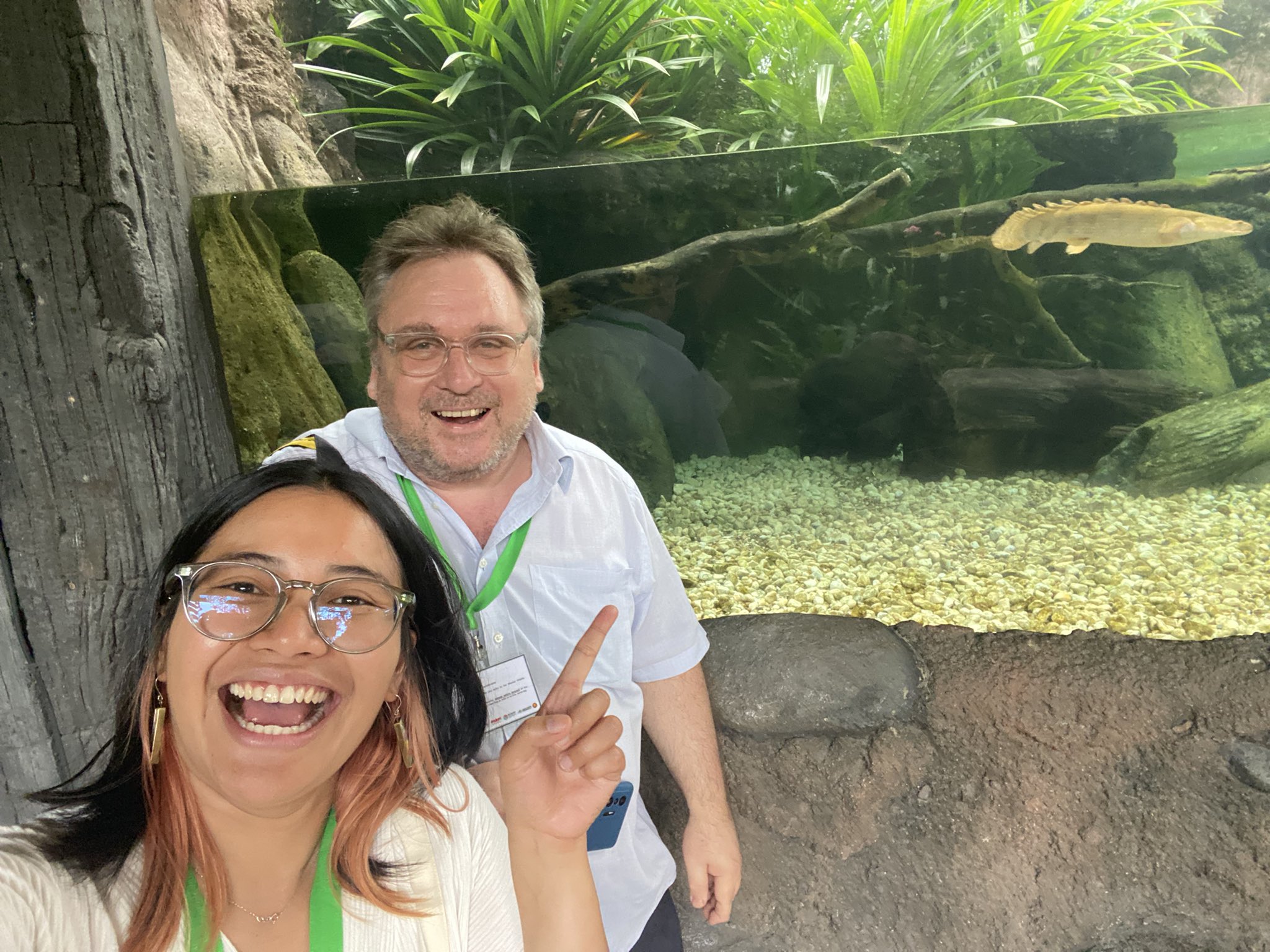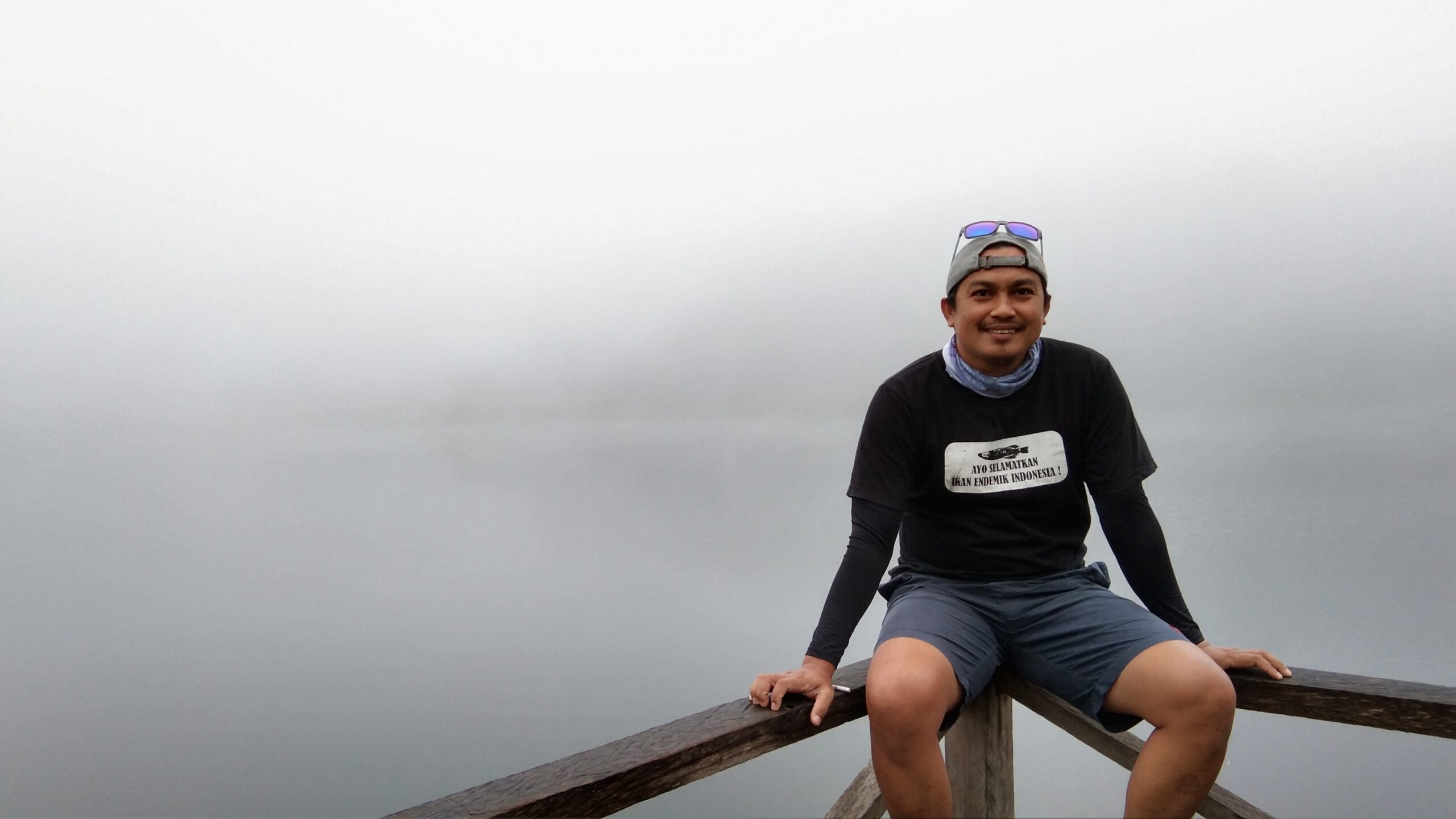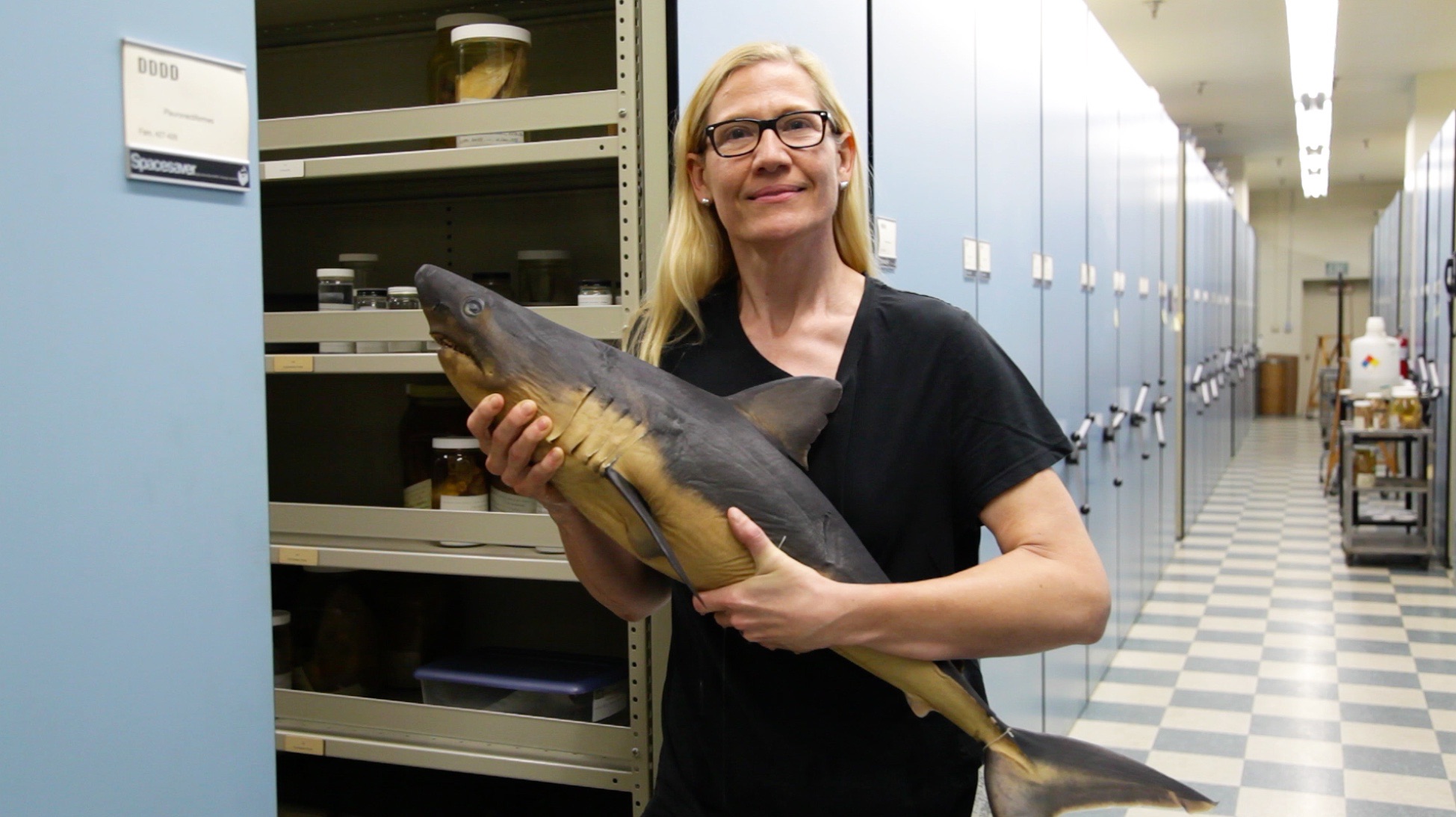The Anguillids of Ambon
by Kathy Hughes
Kathy is a Freshwater Specialist with experience from across Asia, Africa and Europe. She visited Ambon to see its awesome anguillids on holiday earlier this year.
When people think about the world’s most threatened animals, it’s unlikely that Anguillid (freshwater) eels spring to mind. In Europe, freshwater eels are one of our least appreciated but most critically endangered species, having declined by around 95% since the 1980s. Unlike most people, as a freshwater ecologist, I spend a lot of time thinking about animals like the freshwater eel because globally, all freshwater species are facing considerable threats. In fact, freshwater species are declining at double the rate of terrestrial or marine biodiversity and for me, freshwater eels are a bit of a poster-fish for all freshwater biodiversity.
Anguillid eels have life cycles more complex and mysterious than any other species I can think of. They are catadromous; spending most of their lives in freshwaters but returning to the ocean to spawn (a return journey of around ten thousand kilometres). Eels can live for many years, especially females – the oldest known European eel was over 100 years old. Despite being long-lived they only spawn once in their lives. The marine phase of an eel’s life remains much of a mystery – we do not know what eels do during their time in the oceans or exactly where they spawn. An exciting new project is radio-tracking eels to attempt to answer the mysteries that have eluded scientists since the time of Aristotle.
There are multiple threats facing European eels, and to different extents, all other species of freshwater eel around the world. Threats include: climate change, human infrastructure and development, disease, water pollution, habitat loss, over-exploitation and mortality caused by pumps and hydropower dams. Furthermore, as the illegal trade in European, American and Japanese eel is stopped, eels in other parts of the world where protections are less, may be at increased risk.
A critical step in the conservation of eels is ensuring people care about them and with this in mind, during a recent trip to Ambon, Indonesia, I visited Larike village, home to a population of Marbled eels, Anguilla marmorata, to find out why they are important to the local community. I met with Hafes Lauspa who is the King (or Raja) of Larike village. Hafes has taken the unusual step of protecting the eels in his village, meaning that no one can fish for them or harm them in anyway. Hafes hopes that by protecting the eels, the eels will attract tourism to the village and generate income.
What were your motivations for protecting the eels? People in my village have a big appetite for the eels as they believe they are good for achieving healthiness. But the population of eels is getting smaller and it made me think that I must do something to protect the eels so that the population does not become extinct.
What do the villagers think of the eels and the tourists that come to visit them? Since I introduced tourists to the eels of Larike in 2010, the villagers are very happy. They realised that to protect the eels is one of the ways to bring Larike village to the eyes of the world.
What are your hopes for the eels, the river, and Larike village for the future? I am the son of my father, the son of a king and the son of kings, we become a king since the village exists. It is our duty, as kings, to love, to carry and to protect the village until our last breath. As a king I hope to make the village much better in the future. The river has existed for a long time and brings so much life here to the village. I hope it exists forever and will always be with us, for current and future generations. And what about the eels – I hope the eels know that we really love them, and I hope they can love us as much as we do.

Hafes (King of Larike Village) and I posing by the sign welcoming tourists to the village.
Whilst visiting Larike I took the chance to personally test out how much of a tourist-attraction these giant Marbled eels might be. For me the opportunity was very special, my time spent time with their eely cousins in Europe has been dominated by catching them during fish surveys – a challenging endeavour because in the hand they are extremely strong (both physically and in terms of their opinions of trying to escape) and pretty slimy which doesn’t help deal with their aforementioned strength. However, in Larike Village, I had the opportunity to observe freshwater eels on their terms for the first time in my life.
We started the visit with a walk through the picturesque village of Larike where we were greeted by curious children and locals (I must admit, we may have looked strange with our snorkelling equipment and cameras!). At the far end of the village we reached the stunning tropical and tree-lined Lady river (or Weidu Rupae as it is known locally). Hafes pointed to an area on the other side of the river that had large boulders ‘this is where the eels live’. We waded across the shallow middle of the river and as soon as we got close to the boulders, around twenty eels came out of their holes and started to swim around our ankles. It was time to get our snorkel masks on! The water was pristine and cool, a contrast to the warm Indonesian day.
And what a treat the river had in store – as soon as I put my head underwater I had a window to a world that I would’ve never appreciated from the river bank. The water was clear and the river bed a beautiful mix of multiple shades of beige cobbles. Amazingly, the eels were not backwards in coming forwards (as my Mum would say); they were very inquisitive and in groups of two or three inched closer and closer to ‘bop’ my mask and underwater camera. This was especially true of the largest eel (named Bruce by the villagers). Bruce and the gang were clearly interested in the new strange big animal in their habitat, and that interest was mutual! It was clear to see that these fish are capable of complex and inquisitive behaviours and I was blown away that this conservation underdog is outright one of the most charismatic and charming animals I’ve hung out with. It was hard to top such a great experience, but Hafes tried – afterwards he took us to a shop in the village which sold real chocolate!
So has eel eco-tourism got legs? I’m clearly biased but in my opinion yes! If you like fish, water and exploring beautiful places, then hanging out underwater with eels should be on your bucket list. But it must be done in a sustainable way like in Larike village where eels are in pristine natural habitat and free to come and go as they please, and where villagers benefit from tourism. Quite honestly, I’m convinced that if everyone had the chance to engage with eels on their terms like I did in Larike, everyone would become an anguillid advocate like Hafes and I.










